The Chestnutt family from Bushmills, Co Antrim, are established breeders within the pedigree beef and sheep sectors, selling breeding stock throughout the island of Ireland, as well as in Britain.
Over the past six years, the way the Chestnutts show and sell breeding cattle and sheep has changed, with the family moving away from selling stock bulls through society sales.
Instead, they now operate an annual spring sale of commercially reared stock bulls. These sales are growing in popularity with increasing demand from commercial suckler and dairy farmers looking for animals which have not been overfed prior to sale.
This year’s sale will be held on 21 February at Ballymena Mart. For the first time since its inception, the event has been approved as an export sale. Fifteen bulls will go under the hammer, breaking down to 10 Charolais and five Angus bulls all around 20 to 24 months of age.
Heavy concentrate feeding of young bulls from the weanling stage was causing problems with keeping feet and legs correct
The Chestnutt family first got into pedigree breeding with dad Victor establishing a purebred Texel flock back in the 1980s.
A Charolais cattle herd soon followed, and now consists of 30 cows producing breeding animals under the Bushmills prefix. The Angus herd consists of 20 cows under the Clougher prefix, along with 70 pedigree Texel ewes and 80 purebred Scottish Blackface ewes.
The farm also runs a 170-cow dairy unit, which Victor’s son David manages. Victor’s wife Carol and daughter Zara are heavily involved with the business also.
Traditionally, young breeding bulls were sold at the UK’s premier society sales held in Perth, along with local club sales in Northern Ireland and selling direct from farm.
Changing focus
However, according to David, there was a noticeable trend developing from repeat buyers. More customers preferred to purchase new bulls directly from the farm, rather than through society sales, as they felt they were getting a better opportunity to buy bulls in a more natural state.
These customers had also started referring neighbours in the farm’s direction, with buyers remarking on the longevity, ease of calving and type of progeny that the commercially reared bulls produced.
In addition, the cost of rearing young bulls for society sales was becoming more expensive.
Ad-lib meal feeding was required from an early age, so that animals met the minimum liveweight requirements at such sales.
David said: “Heavy concentrate feeding of young bulls from the weanling stage was causing problems with keeping feet and legs correct.
“But this type of feeding is a necessity when entering a bull at a big sale. If bulls were underfed, they struggled to gain the buyer’s attention in the sale yard.
We try to breed bulls that have great mobility, are physically correct, easy calving to suit both the dairy and suckler farmer
“The cost of producing young bulls meant there was little return in it. So we decided to do our own thing and rear bulls the way we thought was best for our buyers.
“We try to breed bulls that have great mobility, are physically correct, easy calving to suit both the dairy and suckler farmer, as well as breeding calves with good weight gain and shape.
“So far, it seems to be working as we have more repeat customers than we have bulls. We have also started to sell easy-calving Charolais bulls to dairy farmers and the feedback has been positive.”
Pedigree cows are predominantly spring-calving, with calves born from March to May. Calves run with the cows until housing time, which normally occurs from mid to late October, weather depending.

Breeding bulls are commercially reared on farm and sold between 20 and 24 months of age. This year, bulls will be sold at an approved export sale in Ballymena Mart on 21 February. There are 15 bulls for sale, with 10 Charolais and five Angus animals on offer. They are all bred from stock bulls on-farm for calving ease, good mobility and to be fit for work straight from the sale.
No concentrate is fed to calves, or cows, at grass. Once housed, calves are gradually weaned. Depending on silage quality, calves are fed no more than 2kg to 3kg/day of a 16% protein ration over the first winter.
All yearling bulls are then turned out to grass for a second season around April, with Angus and Charolais males run as one grazing group.
Again, no concentrate is fed during the second grazing season. Bulls are then housed on slats in late September around 600kg to 650kg liveweight and fed good quality silage, plus 5kg/day of the 16% store ration until Christmas.
Sale prep
At this point, bulls move on to a 50% maize ration to increase muscling and fat cover. The maize ration is fed at a rate of 8kg/day through a diet feeder, along with silage, until sale. Bulls are also moved from slats to a straw-bedded shed, with all Charolais bulls penned together, and the same for Angus.
Around mid-January, bulls will be tied up on a halter and washed twice ahead of selling. However, bulls are not led on the halter, as time is limited with other farming duties to complete.
On the day of the sale, the bulls are haltered for customers to view prior to the sale. However, animals are sold through the ring unhaltered.
The maize ration is fed at a rate of 8kg/day through a diet feeder, along with silage, until sale
Bloodlines
All pedigree calves are bred from stock bulls, rather than AI, as the breeding season occurs during the summer grazing period, making handling of cows less practical. The Charolais stock bull is Ellerton Independent, a 2013 born animal with Doonally New (CF52) and Oldstone Egbert bloodlines.
Angus bulls are bred from the herd’s sire Lissduff Dano, a bull sired by Goulding Jim Dandy with Dalrene Cruz and TLA Northern Samurai in its back pedigree.
Sales
Since starting the annual sale, 60 bulls have been sold to date. During the six years, bulls have been sold in the private sale, with just one bull replaced due to an internal problem, rather than a fertility or physical issue.
Sale prices have reached a high point of 5,900 guinneas for Charolais and 3,600gns for Angus bred animals.
While Charolais bulls are an easier sell, David indicated that there are more buyers looking for Angus, mostly dairy farmers.
Bulls are typically 850kg to 900kg liveweight when sold with a mix of types, form smaller, more muscular types to larger framed animals.
Read more
Weak EU beef market sees Irish price edge above average
In pictures: finishing Brazilian beef in Egypt
The Chestnutt family from Bushmills, Co Antrim, are established breeders within the pedigree beef and sheep sectors, selling breeding stock throughout the island of Ireland, as well as in Britain.
Over the past six years, the way the Chestnutts show and sell breeding cattle and sheep has changed, with the family moving away from selling stock bulls through society sales.
Instead, they now operate an annual spring sale of commercially reared stock bulls. These sales are growing in popularity with increasing demand from commercial suckler and dairy farmers looking for animals which have not been overfed prior to sale.
This year’s sale will be held on 21 February at Ballymena Mart. For the first time since its inception, the event has been approved as an export sale. Fifteen bulls will go under the hammer, breaking down to 10 Charolais and five Angus bulls all around 20 to 24 months of age.
Heavy concentrate feeding of young bulls from the weanling stage was causing problems with keeping feet and legs correct
The Chestnutt family first got into pedigree breeding with dad Victor establishing a purebred Texel flock back in the 1980s.
A Charolais cattle herd soon followed, and now consists of 30 cows producing breeding animals under the Bushmills prefix. The Angus herd consists of 20 cows under the Clougher prefix, along with 70 pedigree Texel ewes and 80 purebred Scottish Blackface ewes.
The farm also runs a 170-cow dairy unit, which Victor’s son David manages. Victor’s wife Carol and daughter Zara are heavily involved with the business also.
Traditionally, young breeding bulls were sold at the UK’s premier society sales held in Perth, along with local club sales in Northern Ireland and selling direct from farm.
Changing focus
However, according to David, there was a noticeable trend developing from repeat buyers. More customers preferred to purchase new bulls directly from the farm, rather than through society sales, as they felt they were getting a better opportunity to buy bulls in a more natural state.
These customers had also started referring neighbours in the farm’s direction, with buyers remarking on the longevity, ease of calving and type of progeny that the commercially reared bulls produced.
In addition, the cost of rearing young bulls for society sales was becoming more expensive.
Ad-lib meal feeding was required from an early age, so that animals met the minimum liveweight requirements at such sales.
David said: “Heavy concentrate feeding of young bulls from the weanling stage was causing problems with keeping feet and legs correct.
“But this type of feeding is a necessity when entering a bull at a big sale. If bulls were underfed, they struggled to gain the buyer’s attention in the sale yard.
We try to breed bulls that have great mobility, are physically correct, easy calving to suit both the dairy and suckler farmer
“The cost of producing young bulls meant there was little return in it. So we decided to do our own thing and rear bulls the way we thought was best for our buyers.
“We try to breed bulls that have great mobility, are physically correct, easy calving to suit both the dairy and suckler farmer, as well as breeding calves with good weight gain and shape.
“So far, it seems to be working as we have more repeat customers than we have bulls. We have also started to sell easy-calving Charolais bulls to dairy farmers and the feedback has been positive.”
Pedigree cows are predominantly spring-calving, with calves born from March to May. Calves run with the cows until housing time, which normally occurs from mid to late October, weather depending.

Breeding bulls are commercially reared on farm and sold between 20 and 24 months of age. This year, bulls will be sold at an approved export sale in Ballymena Mart on 21 February. There are 15 bulls for sale, with 10 Charolais and five Angus animals on offer. They are all bred from stock bulls on-farm for calving ease, good mobility and to be fit for work straight from the sale.
No concentrate is fed to calves, or cows, at grass. Once housed, calves are gradually weaned. Depending on silage quality, calves are fed no more than 2kg to 3kg/day of a 16% protein ration over the first winter.
All yearling bulls are then turned out to grass for a second season around April, with Angus and Charolais males run as one grazing group.
Again, no concentrate is fed during the second grazing season. Bulls are then housed on slats in late September around 600kg to 650kg liveweight and fed good quality silage, plus 5kg/day of the 16% store ration until Christmas.
Sale prep
At this point, bulls move on to a 50% maize ration to increase muscling and fat cover. The maize ration is fed at a rate of 8kg/day through a diet feeder, along with silage, until sale. Bulls are also moved from slats to a straw-bedded shed, with all Charolais bulls penned together, and the same for Angus.
Around mid-January, bulls will be tied up on a halter and washed twice ahead of selling. However, bulls are not led on the halter, as time is limited with other farming duties to complete.
On the day of the sale, the bulls are haltered for customers to view prior to the sale. However, animals are sold through the ring unhaltered.
The maize ration is fed at a rate of 8kg/day through a diet feeder, along with silage, until sale
Bloodlines
All pedigree calves are bred from stock bulls, rather than AI, as the breeding season occurs during the summer grazing period, making handling of cows less practical. The Charolais stock bull is Ellerton Independent, a 2013 born animal with Doonally New (CF52) and Oldstone Egbert bloodlines.
Angus bulls are bred from the herd’s sire Lissduff Dano, a bull sired by Goulding Jim Dandy with Dalrene Cruz and TLA Northern Samurai in its back pedigree.
Sales
Since starting the annual sale, 60 bulls have been sold to date. During the six years, bulls have been sold in the private sale, with just one bull replaced due to an internal problem, rather than a fertility or physical issue.
Sale prices have reached a high point of 5,900 guinneas for Charolais and 3,600gns for Angus bred animals.
While Charolais bulls are an easier sell, David indicated that there are more buyers looking for Angus, mostly dairy farmers.
Bulls are typically 850kg to 900kg liveweight when sold with a mix of types, form smaller, more muscular types to larger framed animals.
Read more
Weak EU beef market sees Irish price edge above average
In pictures: finishing Brazilian beef in Egypt




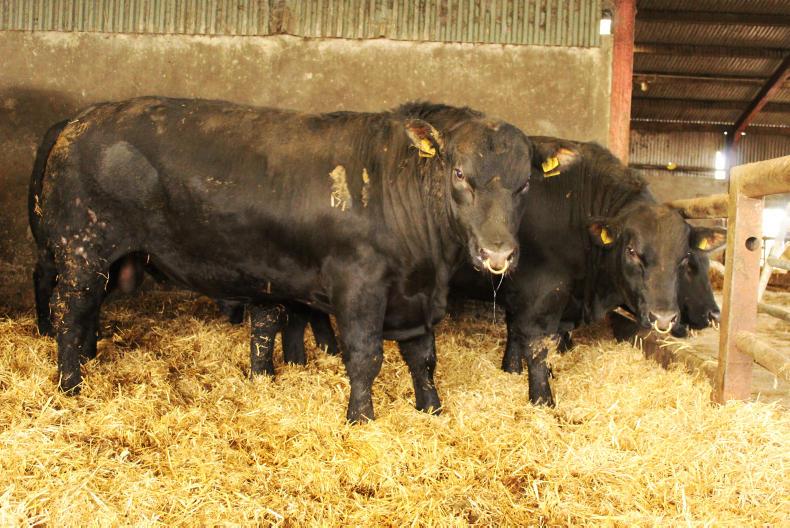

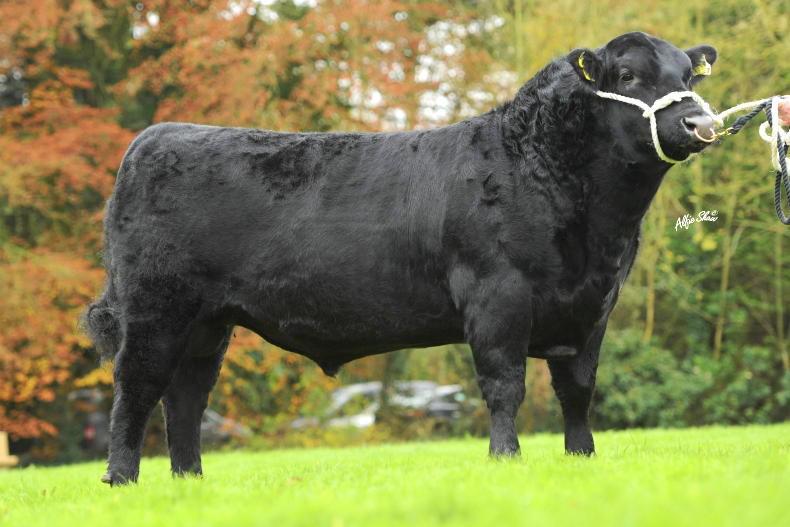
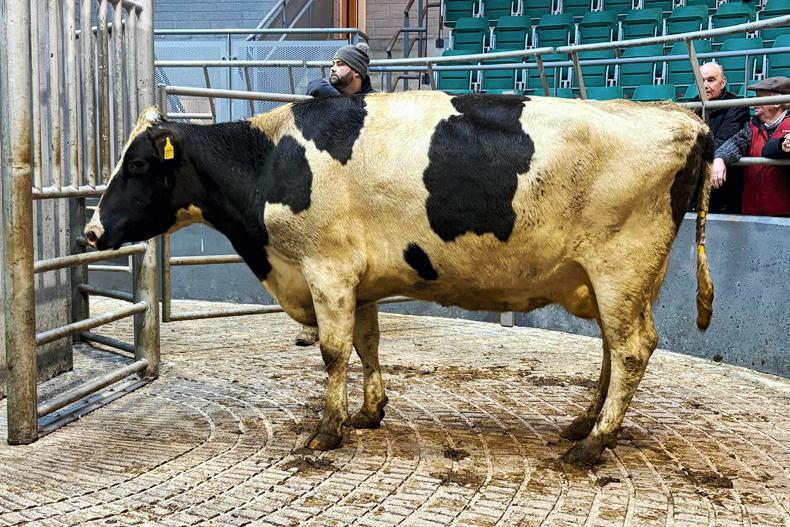
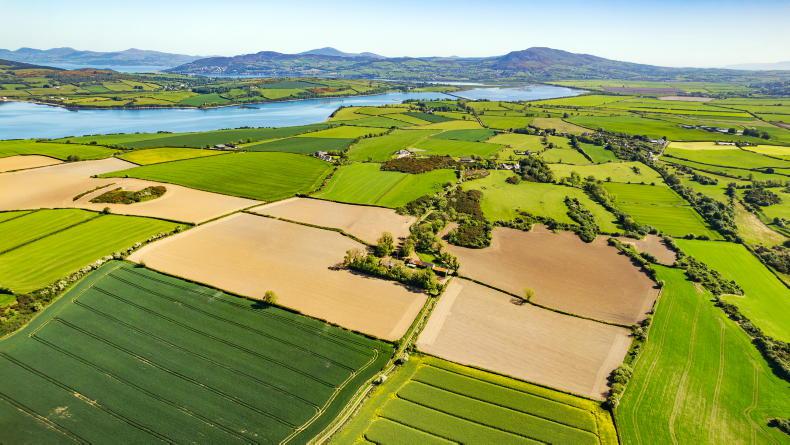
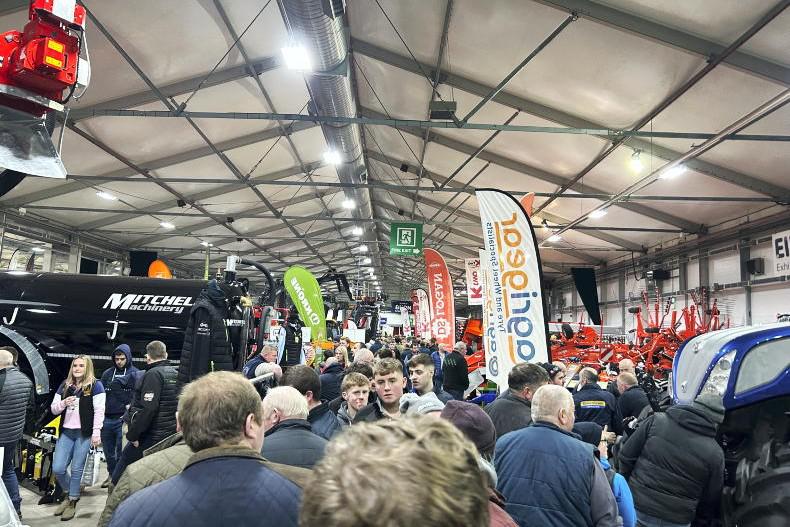
SHARING OPTIONS